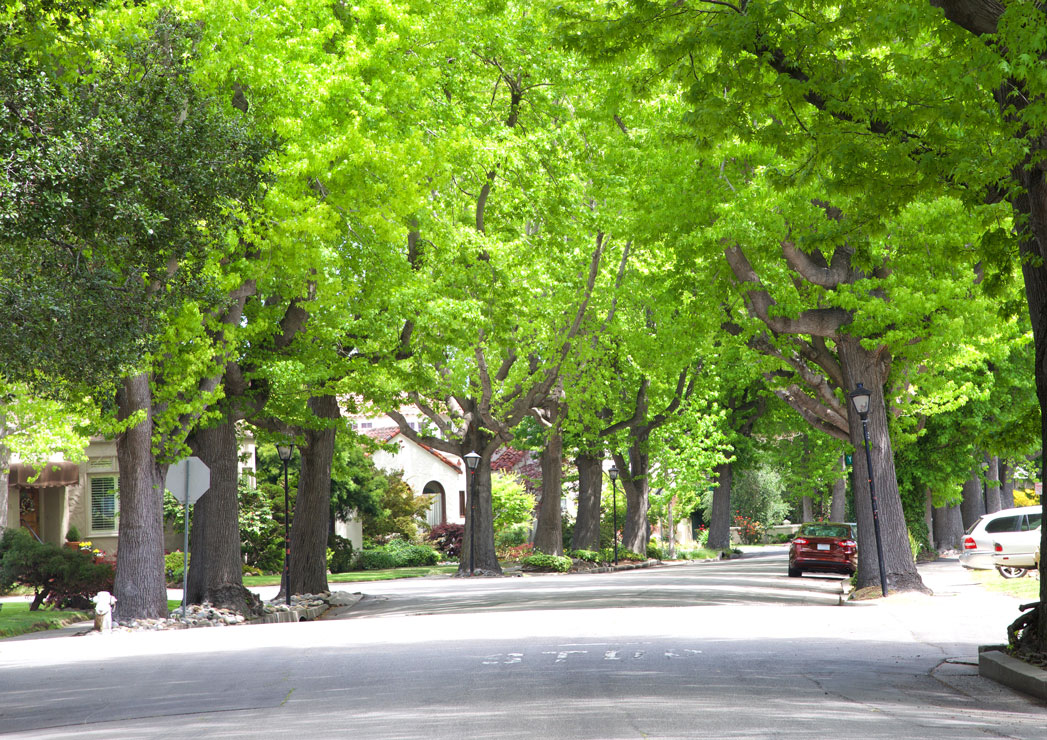If it’s Green, it’s Good – For Your Heart

Tree-lined neighborhoods, it turns out, are not only pretty and good for the environment. They’re better for your heart health.
According to new research, people living on blocks with the highest levels of tree canopy could have lower risks for a number of heart diseases compared with residents of blocks with the lowest levels of ‘greenness.’
This could be credited to greater physical activity, more social interaction, a lower perception of stress and a number of other benefits of living in greener neighborhoods.

Compared with Miami-Dade County residents living in an area that fell within the lowest one third of greenness, those in the highest one third had a 25 percent lower risk of a heart attack, a 20 percent lower likelihood for ischemic heart disease, a 16 percent lower chance of experiencing heart failure and a six percent lower likelihood of atrial fibrillation.
“We focused on cardiovascular disease because it’s still the leading cause of death in the U.S., and a major contributor to morbidity,” said Dr. Scott Brown, a research assistant professor of public health sciences at the University of Miami Miller School of Medicine and study co-author.
Using an innovative research approach that combined satellite imagery, U.S. Census nine-digit zip code information, and data on nearly 250,000 Medicare beneficiaries in the county, Dr. Brown, lead author Kefeng Wang, and colleagues were able to be more precise than previous work and “drill down to specific forms of heart disease in relation to greenness.”
“We were somewhat surprised with the strength of the findings,” Dr. Brown said. The study revealed consistent, moderately strong relationships between higher greenness and lower cardiovascular risks.
The risk reduction regarding atrial fibrillation was not as robust. He noted that AFib includes a familial form, which tends to have a more genetic component.
The health benefits associated with higher levels of greenness remained even after controlling for age, gender, race/ethnicity and income. “We know lower median neighborhood income can be a risk factor for increased likelihood of multiple health problems,” Dr. Brown said. “It’s one of the social determinants of health.”
In contrast, presence of medical conditions associated with increased heart disease risk did decrease the strength of the associations. People with diabetes, hypertension or hyperlipidemia still benefited from more greenness on their block, but less so than others. For example, the overall reduction in ischemic heart disease risk of 20 percent dropped to 14 percent with these comorbidities. At the same time the decreased risk of heart failure was less pronounced, going from 16 percent to five percent.
“Physical activity can be a very significant protective factor, for example, against heart disease,” Dr. Brown said. “And in South Florida, it’s so hot for so much of the year that having shade may provide greater opportunities for all of us to go outside.”
South Florida does experience urban heat island effects that could deter people from participation in outdoor activities, he added.
Improvements in air quality gained when trees filter out pollution is likely less of a contributor to heart disease risk reduction in South Florida, Dr. Brown said. That’s because air pollution is generally less of a concern in the Sunshine State. In contrast, investigators in Louisville, Kentucky, are looking at the specific association between green space filtration of pollution and heart health in their Green Heart Project.
The research also lends itself to a different kind of community involvement. One of their main messages targets urban planners – emphasizing that planting more trees in residential neighborhoods could improve heart health, particularly on blocks with low greenness levels.
The researchers are working with the director of Miami-Dade’s Department of Parks, Recreation and Open Spaces, Maria Nardi, to promote the planting of trees on blocks where they could have the greatest impact. Miami-Dade County has already planted more than 200,000 trees as part of its Million Trees Miami initiative.
Although the current study focuses more on the big picture of improving heart health block-by-block across the county, other evidence suggests greenness can boost physical activity benefits on an individual basis. For example, a study in the journal Lancet in 2018 demonstrated that a walk in the park provided greater cardiovascular benefit in terms of lowering blood pressure in older adults compared to a walk on a city block.
“An implication is that walking in urban green space areas might be a recommendation on the part of physicians to maximize the cardiorespiratory benefits of exercise,” Dr. Brown said. In addition, doctors could help patients improve overall cardiovascular health through physical activity and other tips included in Life’s Simple 7 recommendations from the American Heart Association.
Dr. Brown and colleagues also published a previous study linking increased greenness to a lower risk for Alzheimer’s disease and depression.
Going forward, Dr. Brown and colleagues are evaluating the impact of increasing greenness on residential blocks. “We’re looking at some of the effects of the ongoing tree planting on heart disease and other cardiovascular diseases as part of a Robert Wood Johnson Evidence for Action study. We can compare continuously low green blocks, continuously high green blocks, and blocks undergoing tree-planting and assess what happens when you go from low to high green in terms of risk for heart disease.”
Dr. Brown presented the current study at the American Heart Association Epi|Lifestyle conference in Houston on March 5, timed to publish simultaneously in the Journal of the American Heart Association.
The research was reported March 5 in the Journal of the American Heart Association.
Written by Damian McNamara for Inventum.
Tags: Dr. Scott Brown, green heart project, healthy living miami, nature and health, trees
